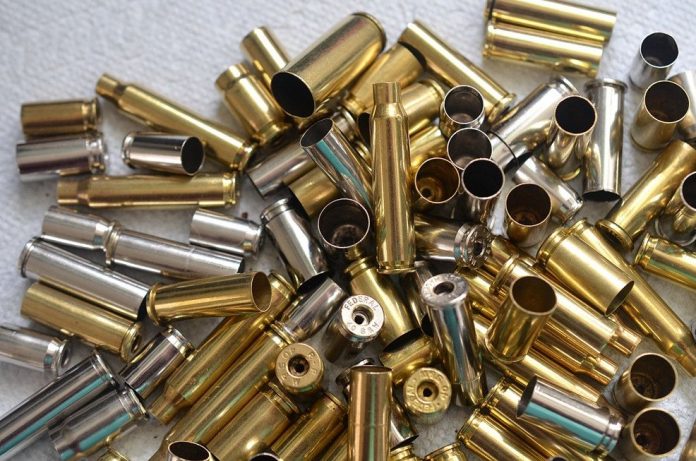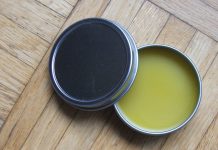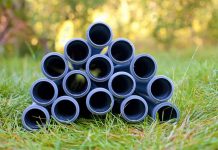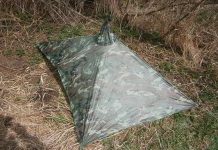I go through a decent amount of ammo as a survivalist and hunter. This involves bullets as well as shotgun shells.
Whether I’m out chasing down the game or enjoying target practice after a busy day, there are shell casings left over. I would not be a true prepper and survivalist if I threw them away with such a plentiful resource.
Reloading my own ammunition is the obvious answer. I just don’t have time to reload any of it, even though I know how to reload ammunition and have the supplies. If things were tougher, and I hunted every day, I would take the time to reload it all.
There are additional methods of repurposing brass casings and plastic shotgun shells for the meantime.
For those leftovers, there are many crafty ideas, but I wanted to put together a list of practical uses. For a survival situation, most of these will be suitable.
Related: Using Airsoft For Prepper Training
Working With Brass Casings
Brass is a fairly soft metal, so it can be cut and bent reasonably quickly. You may use it for decorative purposes, but bearings and seals for machinery are more practical. It does not ignite, but explosive substances such as gasoline should be used around it. It quickly melts, so that you can melt it down to form it into other forms.
You can use just about any saw or heavy blade for cutting brass. To sand it off, you can use a grinder, a file, or even rub the casing with concrete. You simply need to cut off the closed end with the primer for a flat piece of brass. You just hammer it flat from there. With any sort of bit, you can drill through it or even use the point of your knife to punch a hole.
Repurposing Shotgun Shells
Shotgun shells are made of plastic, so they can be cut much more quickly. Any sharp blade will do. To eliminate the plastic, you should cut just above the brass.
The cleanest method of extracting the plastic, however, is to heat the brass. It will start to heat up if you turn a clothes iron upside down and set the brass part on top. The plastic will pull free with just a bit of heat, leaving the brass component separate. Make sure to first clean your shells so that there is no residue left to catch fire.
Here are the realistic ways that your casings and shells can be reused:
Emergency Whistle
It is important that you have a way to warn people of your presence in a survival scenario. This might be to warn rescuers, or it might just be to communicate with your family.
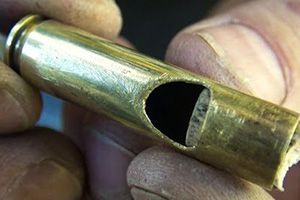

For this, a good survival whistle is ideal.
The sound will cut through the wind better than just shouting, and your voice won’t wear out.
Long pistol casings are best, but you can also cut the taper off of rifle casings.
Trim a notch perpendicular to the length of the shell with the edge nearest to the opening. The other side of the notch should be parallel at 30 to 45 degrees. Find a stick that matches the shell securely inside. Make sure the stick’s end is entirely flat. Then shave the side facing the notch down, so that there is a little air difference.
It should make a whistling sound when you push the stick.
Sinkers For Fishing
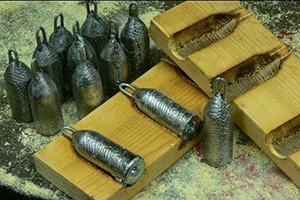

Having a number of different weights available to connect to your fishing line is always good.
For this, brass casings work well. Just fill the sand with your brass and pound the open end shut.
Cut a hole through your line, and you’re ready to fish.
Related: DIY Hunting Fishing Cooking Kit for Preppers
Chimes
Larger casings would fit better for this project if you want a decent amount of volume. These work well for tripwire perimeter alarms or just to let you know when the wind blows.
To connect strings to each shell, just cut off the closed end and punch holes. String them up on a frame and you’ll have yourself chimes.
Dog Tags
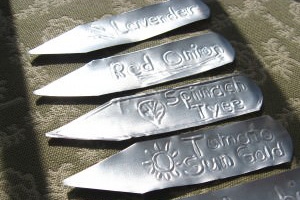

I really meant just a metal label when I refer to dog tags. It could be for your pets, to label your keys, or it could be in your garage for labeling items. You just need to cut off the primer end and the casing flat pounded. Punch a hole in one side. Then just stamp any details you like with a regular metal stamp.
Shims
You often need a spacer or a shim to fill the equipment or the joints of a wooden project with a small gap. For this job, the thin sheets of brass that you get from flattening a shell case are fine. For the thickness, just bring in as many sheets as you need and cut off any excess brass.
Arrowheads
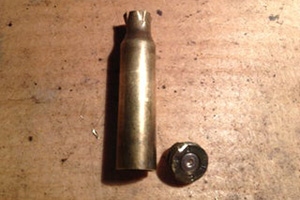

Start by flattening the casing to create arrowheads out of brass casings.
Break the end off and then pound it flat. Cut out the shape you want in order to mount the arrowhead to an arrow shaft and remember to have a nice shape. Sharpen the edges of both, and you’re ready to hunt.
Related: Do You Have These Bushcraft Skills?
Seals
It may need a seal to retain pressure if you have a piece of equipment made of a harder metal like steel. To seal and retain pressure, a soft metal can be cut to form and placed in the junction.
Colored Lens For A Flashlight
In a survival situation, getting colored light at night can be beneficial.
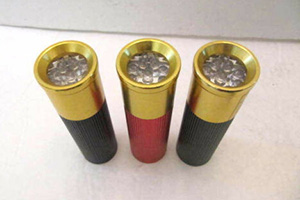

As white light does, red light does not disrupt night vision. Green light is suitable at night for hunting hogs. To turn your flashlight into a signal, any color can be used.
Simply remove the brass from the plastic shell and use a heat gun to flatten the plastic. Then cut it to the right size and mount it to the light you have.
Drawer Handles
As they are brightly colored and easy to grab, shotgun shells create good handles. Only apply epoxy inside the shell for tools or equipment and press the tool or equipment lever into the epoxy.
Let it dry it and you’re good. Just place a screw in the epoxy with the pointy end facing out for drawer pulls.
Bearings
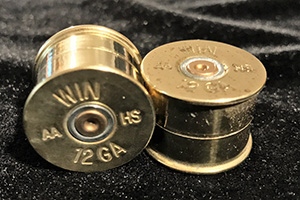

To avoid metal rubbing on metal, brass is excellent for bearings in machinery. In certain cases, the primer end can be used as is. It will need to be melted down in other ways to cast a bearing.
Related: 18 Vintage Homesteading Tools to Search for at Garage Sales
Buttons
Only cut the primer end of a shotgun shell or brass casing off for fast buttons. Then drill holes, and it’s good for you to go.
Candles
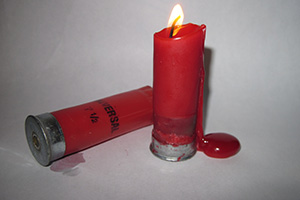

Shotgun shells are suitable for emergency candles in both size and form. They’re small enough to put in your pocket, but they’re big enough to stay lit for an hour or so.
The shell itself stops the wax from getting all over it all. Just add some melted wax and a wick and let it set up.
Push Pins
You will need to identify landmarks on a map if you are preparing a foraging grid or a route for bugging out.
If they have a shell casing attached, push pins are easier to use. Only find push pins that match in and glue them in place within the casing. That way, they are less likely to end up in your carpet or your foot.
Grommets
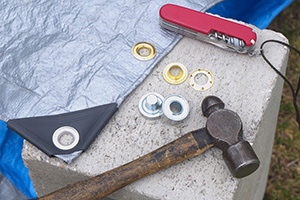

In order to prevent them from fraying when attached to cordage, brass grommets are required at the corners of tarps and other things.
Either from shotgun shells or brass casings, you can cut the primer end off.
Then the primer itself pops out, and you’ve got the grommet.
There are plenty of applications for your unused brass casings and shotgun shells, as you can see. To carry out a few of these projects, you just need to take the initiative. Start gathering all of your shells and casings. You will be ready to use these to their full capacity when SHTF is used.



